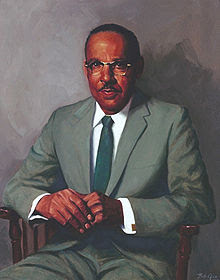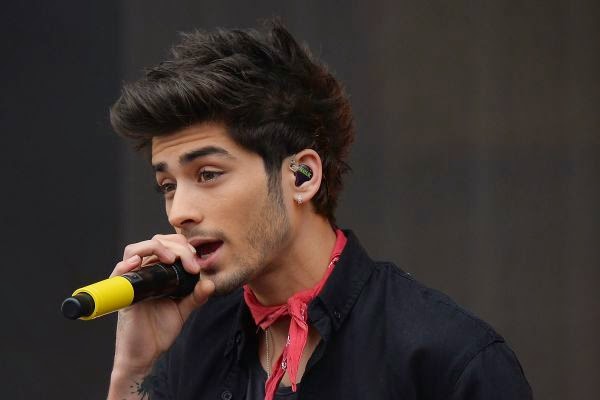Vivien Thomas An African American Who Invented And Carried Out The First Hearth Surgery Without Attending A Medical School
Thomas was born in New Iberia, Louisiana, the son of Mary (Eaton) and William Marco Thomas. The grandson of a slave, he attended Pearl High School in Nashville in the 1920s. Thomas had hoped to attend college and become a doctor, but the Great Depression derailed his plans.
"The great depression was at a time when blacks or African Americans were regarded as third class workers. They could only hold menial jobs to survive and not valued enough to walk on the same pave way as the whites."
He worked at Vanderbilt University in the summer of 1929 doing carpentry but was laid off in the fall. In that same year, Thomas enrolled in the Tennessee Agricultural and Industrial College as a premedical student. In the wake of the stock market crash in October, Thomas put his educational plans on hold, a year later and, through a friend, he secured a job as surgical research technician with Dr. Alfred Blalock at Vanderbilt University.
On his first day of work, Thomas assisted Blalock with a surgical experiment on a dog. At the end of Thomas's first day, Blalock told Thomas they would do another experiment the next morning. Blalock told Thomas to "come in and put the animal to sleep and get it set up". Within a few weeks, Thomas was starting surgery on his own without a pre-medical knowledge.Thomas was classified and paid as a janitor (3rd grade worker), despite the fact that by the mid 1930s, he was doing the work of a postdoctoral researcher in the lab.
Before meeting Blalock, Thomas married Clara and had two daughters. When Nashville's banks failed nine months after starting his job with Blalock and Thomas' savings were wiped out, he abandoned his plans for college and medical school, relieved to have even a low-paying job as the Great Depression deepened.
Among the dogs on whom Thomas operated was one named Anna, who became the first long-term survivor of the operation and the only animal to have her portrait hung on the walls of Johns Hopkins. In nearly two years of laboratory work involving some 200 dogs, Thomas was ultimately able to replicate only two of the four cardiac anomalies involved in tetralogy of Fallot. He did demonstrate that the corrective procedure was not lethal, thus persuading Blalock that the operation could be safely attempted on a human patient. Even though Thomas knew he was not allowed to operate on patients at that time, he still followed Blalock's rules and assisted him during surgery.
On November 29, 1944, the procedure was first tried on an eighteen-month-old infant named Eileen Saxon. The blue baby syndrome had made her lips and fingers turn blue, with the rest of her skin having a very faint blue tinge. She could only take a few steps before beginning to breathe heavily. Because no instruments for cardiac surgery then existed,
Thomas invented the needles and clamps for the procedure from those he used in the animal lab. During the surgery itself, at Blalock's request, Thomas stood on a step stool at Blalock's shoulder and coached him step by step through the procedure. Thomas performed the operation hundreds of times on a dog, whereas Blalock only once as Thomas' assistant.
The surgery was not completely successful, though it did prolong the infant's life for several months. Blalock and his team operated again on an 11-year-old girl, this time with complete success, and the patient was able to leave the hospital three weeks after the surgery. Next, they operated upon a six-year-old boy, who dramatically regained his color at the end of the surgery. The three cases formed the basis for the article that was published in the May 1945 issue of the Journal of the American Medical Association, giving credit to Blalock and Taussig for the procedure. Thomas received no mention.
Thomas's surgical techniques included one he developed in 1946 for improving circulation in patients whose great vessels (the aorta and the pulmonary artery) were transposed. A complex operation called an atrial septectomy, the procedure was executed so flawlessly by Thomas that Blalock, upon examining the nearly undetectable suture line, was prompted to remark, "Vivien, this looks like something the Lord made"
Despite the deep respect Thomas was accorded by these surgeons and by the many black lab technicians he trained at Hopkins, he was not well paid. He sometimes resorted to working as a bartender, often at Blalock's parties. This led to the peculiar circumstance of his serving drinks to people he had been teaching earlier in the day.
Eventually, after negotiations on his behalf by Blalock, he became the highest paid technician at Johns Hopkins by 1946, and by far the highest paid African-American on the institution's rolls. Although Thomas never wrote or spoke publicly about his ongoing desire to return to college and obtain a medical degree, his widow, the late Clara Flanders Thomas, revealed in a 1987 interview with Washingtonianwriter Katie McCabe that her husband had clung to the possibility of further education throughout the blue baby period and had only abandoned the idea with great reluctance. Mrs. Thomas stated that in 1947, Thomas had investigated the possibility of enrolling in college and pursuing his dream of becoming a doctor, but had been deterred by the inflexibility of Morgan State University, which refused to grant him credit for life experience and insisted that he fulfill the standard freshman requirements. Realizing that he would be 50 years old by the time he completed college and medical school, Thomas decided to give up the idea of further education.
Thomas died in November 26 1985 at age 75......


Comments
Post a Comment